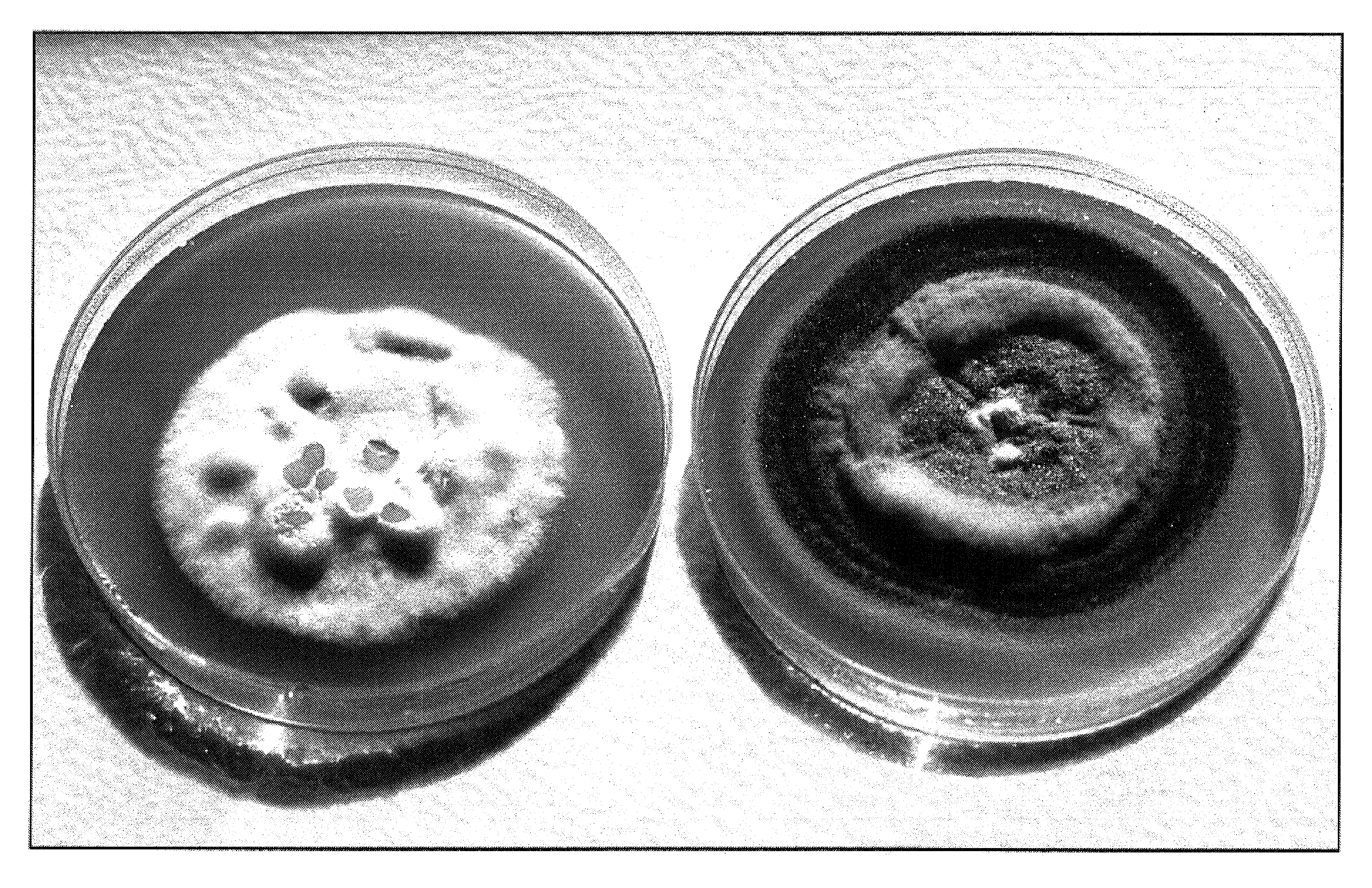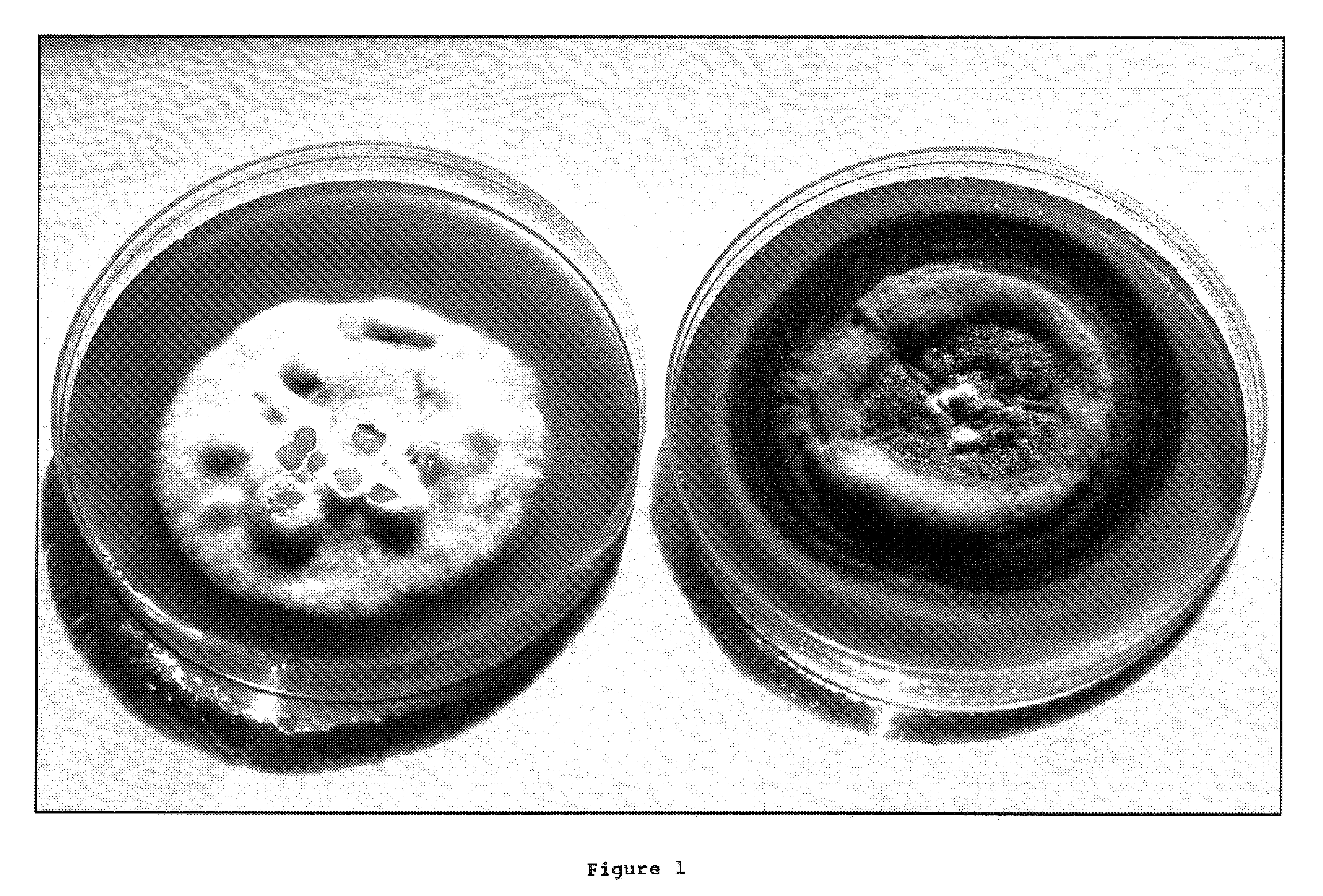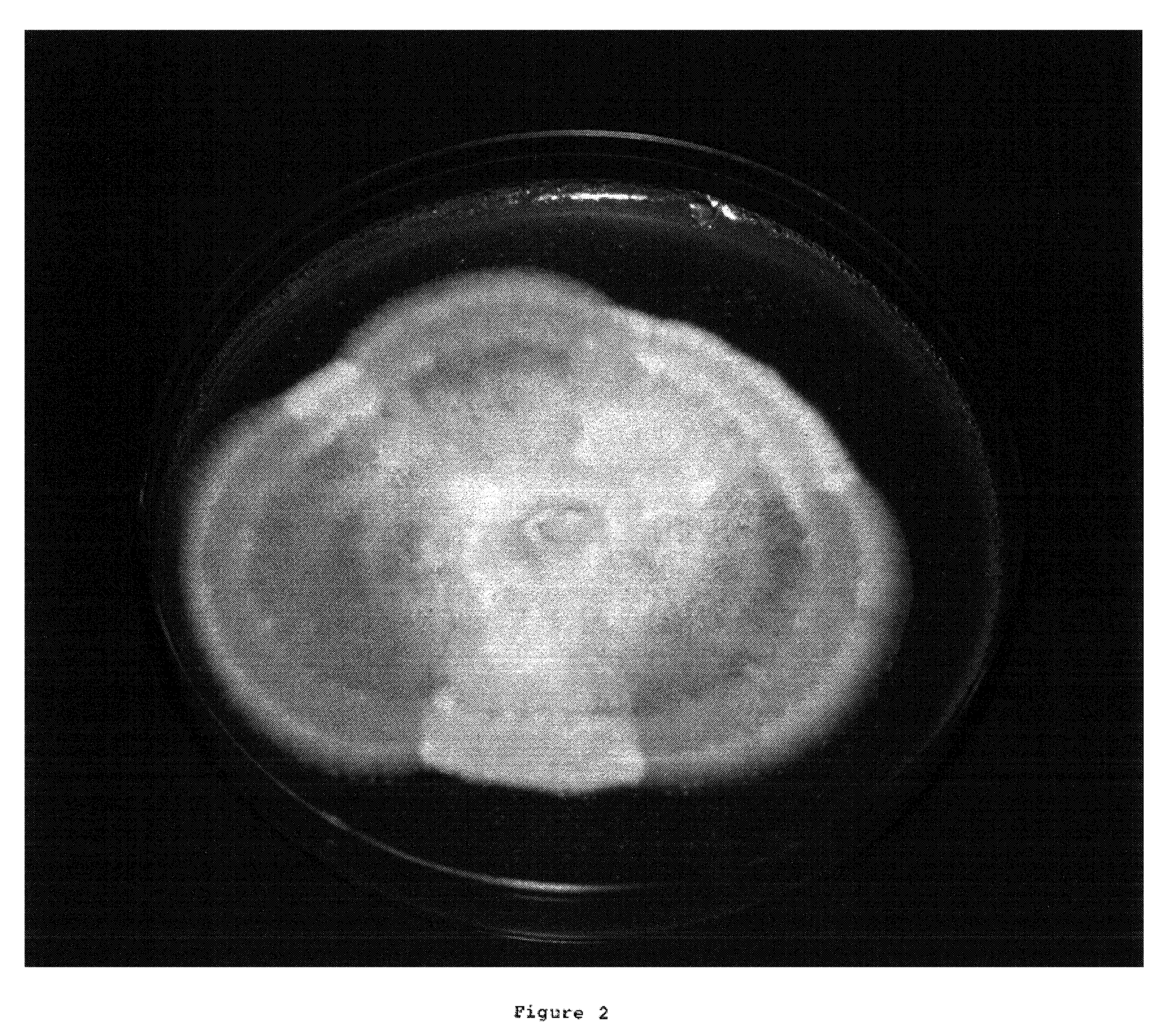Mycoattractants and mycopesticides
a mycotractant and mycotractant technology, applied in the field of mycology and entomology, can solve the problems of few commercially available pesticides that are effective without thorough and repeated application, and many secondary environmental problems, so as to avoid the use of conidia, improve the control of insect pests, and increase the recruitment of other insects.
- Summary
- Abstract
- Description
- Claims
- Application Information
AI Technical Summary
Benefits of technology
Problems solved by technology
Method used
Image
Examples
example 1
[0074]Metarhizium anisopliae ATCC #62176 was grown in pure culture using standard fermentation techniques and diluted and aseptically transferred to grain (brown rice) which had been pressure steam-sterilized at one (1) kg / cm2 (15 psi). The mycelium overgrew the rice and approximately 10–20 grams of preconidial mycelium of Metarhizium anisopliae was offered at the site of debris piles caused by carpenter ants (Camponotus modoc) at the interior face of an exterior wall of a wood frame residence located in Shelton, Wash., U.S.A. The mycelium was presented on a small dish and left exposed to the air. An observation made after three hours disclosed the carpenter ants feasting en masse on the non-sporulating, preconidial mycelium of the Metarhizium and approximately one dozen (12) carpenter ants were observed retreating into the wall, carrying pieces of the infectious mycelium with them. In a week's time, the carpenter ant colony became inactive and no evidence of carpenter ant activity ...
example 2
[0075]For “choice” tests, termite colony fragments of 50 pseudergates (workers) of the Eastern Subterranean Termite Reticulitermes flavipes (Kollar) or Formosan Subterranean Termite Coptotermes formosanus (Shiraki) [Isoptera: Rhinotermitidae] per test unit arena were collected prior to the start of the bioassay evaluation. The termite colony fragments were placed in plastic boxes with soil, adjusted to laboratory conditions and fed standard diet (standard tongue depressor section) and provided with a moistened cellulose source placed on top of the fungal preconidial mycelium in hexagonal weigh boats, perforated with 5 mm holes on all sides to allow termite entry. For “no-choice” or tube tests, termite colony fragments of 50 pseudergates (workers) per tube were collected prior to the start of the bioassay evaluation. Glass tubes were prepared containing fungal preconidial mycelium in the center, with moistened soil on each end of the mycelium, then bounded on each end by agar plugs. ...
example 3
[0080]Test unit colony fragments of 30 pseudergate Reticulitermes flavipes (Kollar) Eastern subterranean termites per tube bioassay were established as above and broken down after 14 days testing. There were three replicates of each of three test preconidial mycelium test strains and three control tubes, for a total of 12 tubes.
[0081]Beauveria bassiana # 74038 on rice was freely tunneled in test arenas by the termites. Significant mortality (100%) was observed. A mortality of 45.56% was observed in controls.
[0082]Beauveria bassiana # 20872 on rice was freely tunneled in test arenas by the termites. Non-significant mortality levels of 84.4% were observed with control group mortality of 45.56%.
[0083]Metarhizium anisopliae # 62176 on rice was freely tunneled in test arenas by the termites. Non-significant mortality levels of 66.3% were observed with control group mortality of 45.56%.
[0084]
EasternSubterranean% Mortality at 14 DaysTermite(3 replicates)Strain # 74038100100100Strain # 2087...
PUM
| Property | Measurement | Unit |
|---|---|---|
| size | aaaaa | aaaaa |
| physical | aaaaa | aaaaa |
| resistance | aaaaa | aaaaa |
Abstract
Description
Claims
Application Information
 Login to View More
Login to View More - R&D
- Intellectual Property
- Life Sciences
- Materials
- Tech Scout
- Unparalleled Data Quality
- Higher Quality Content
- 60% Fewer Hallucinations
Browse by: Latest US Patents, China's latest patents, Technical Efficacy Thesaurus, Application Domain, Technology Topic, Popular Technical Reports.
© 2025 PatSnap. All rights reserved.Legal|Privacy policy|Modern Slavery Act Transparency Statement|Sitemap|About US| Contact US: help@patsnap.com



